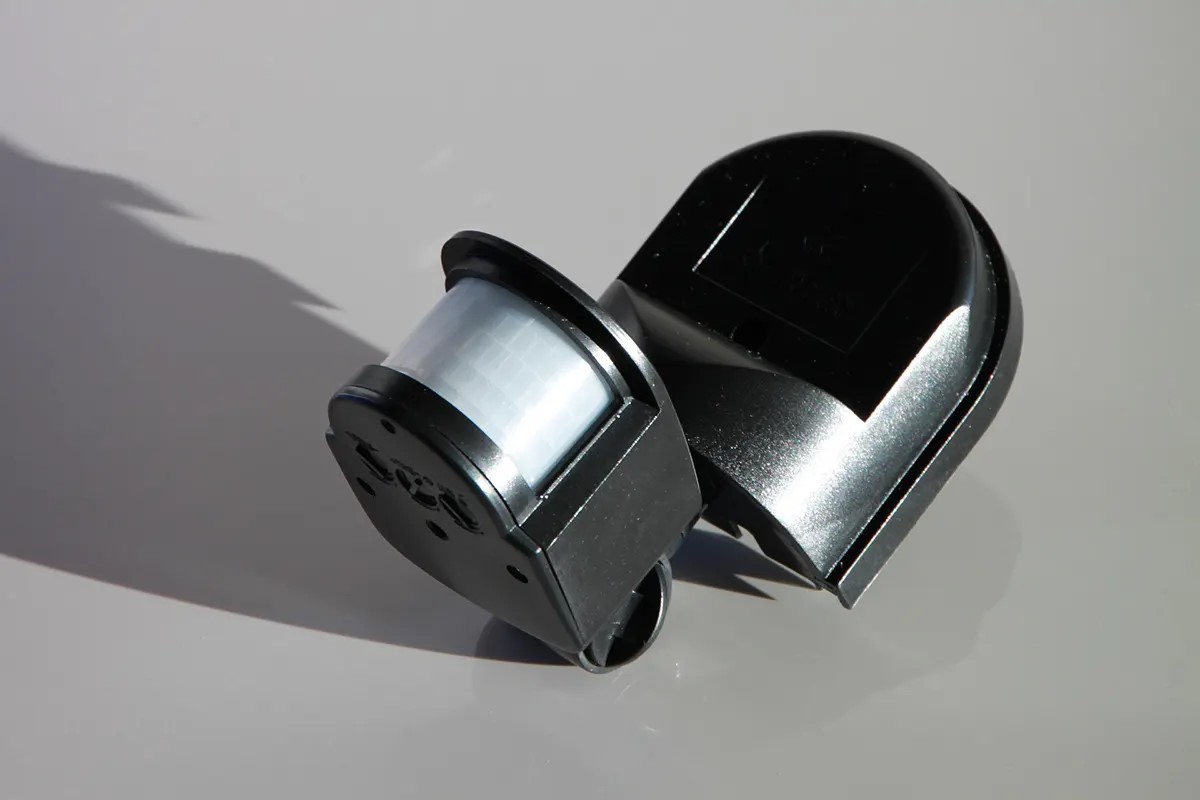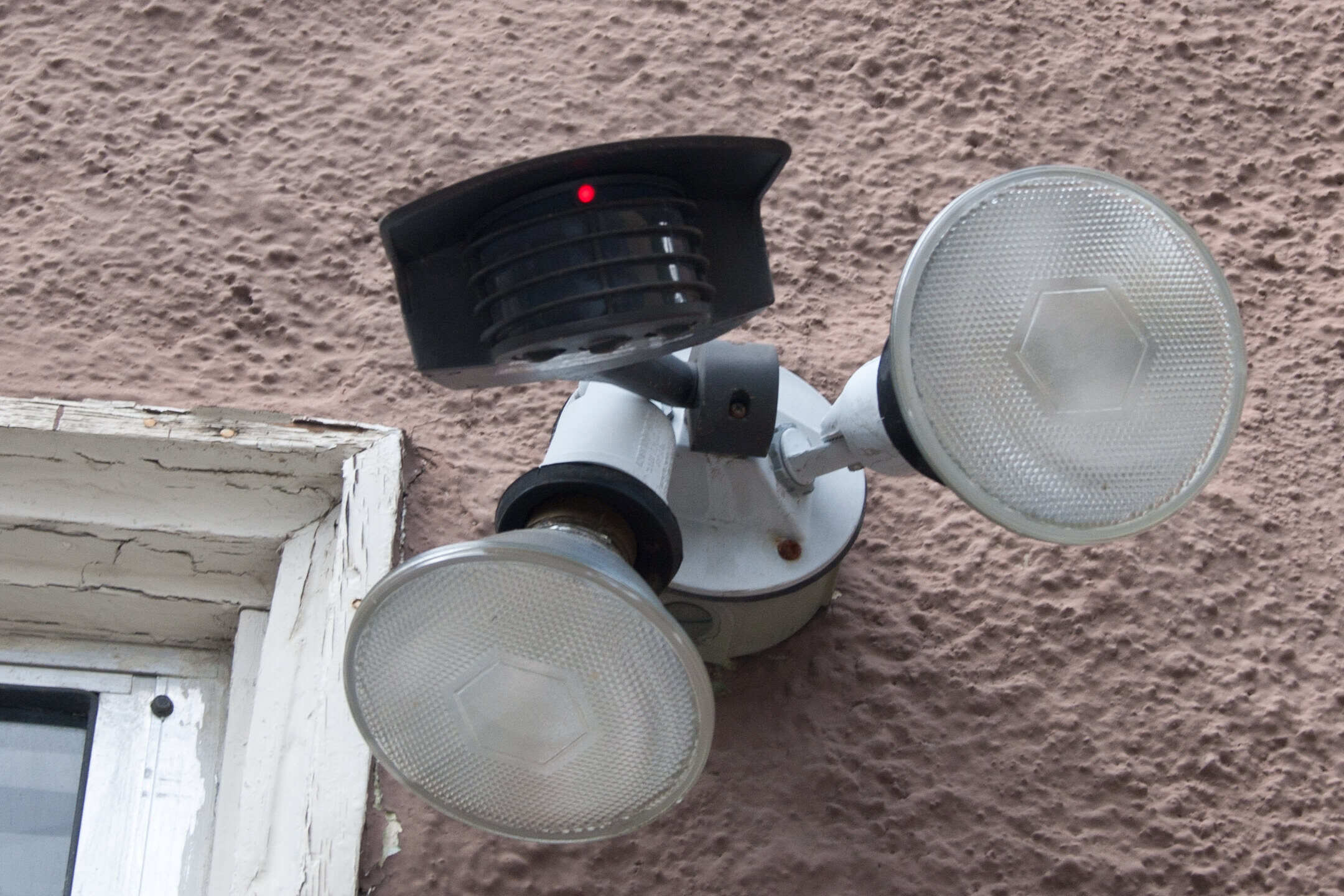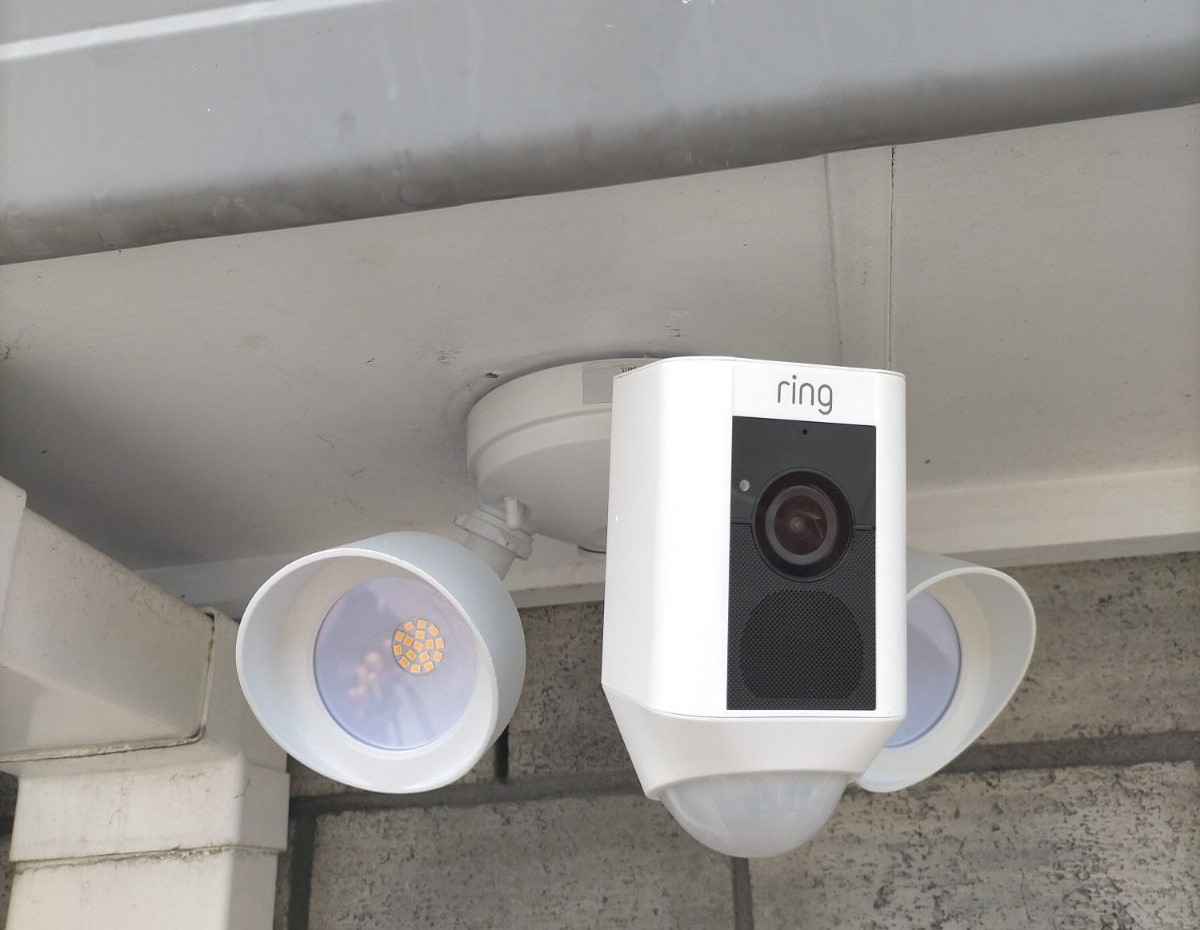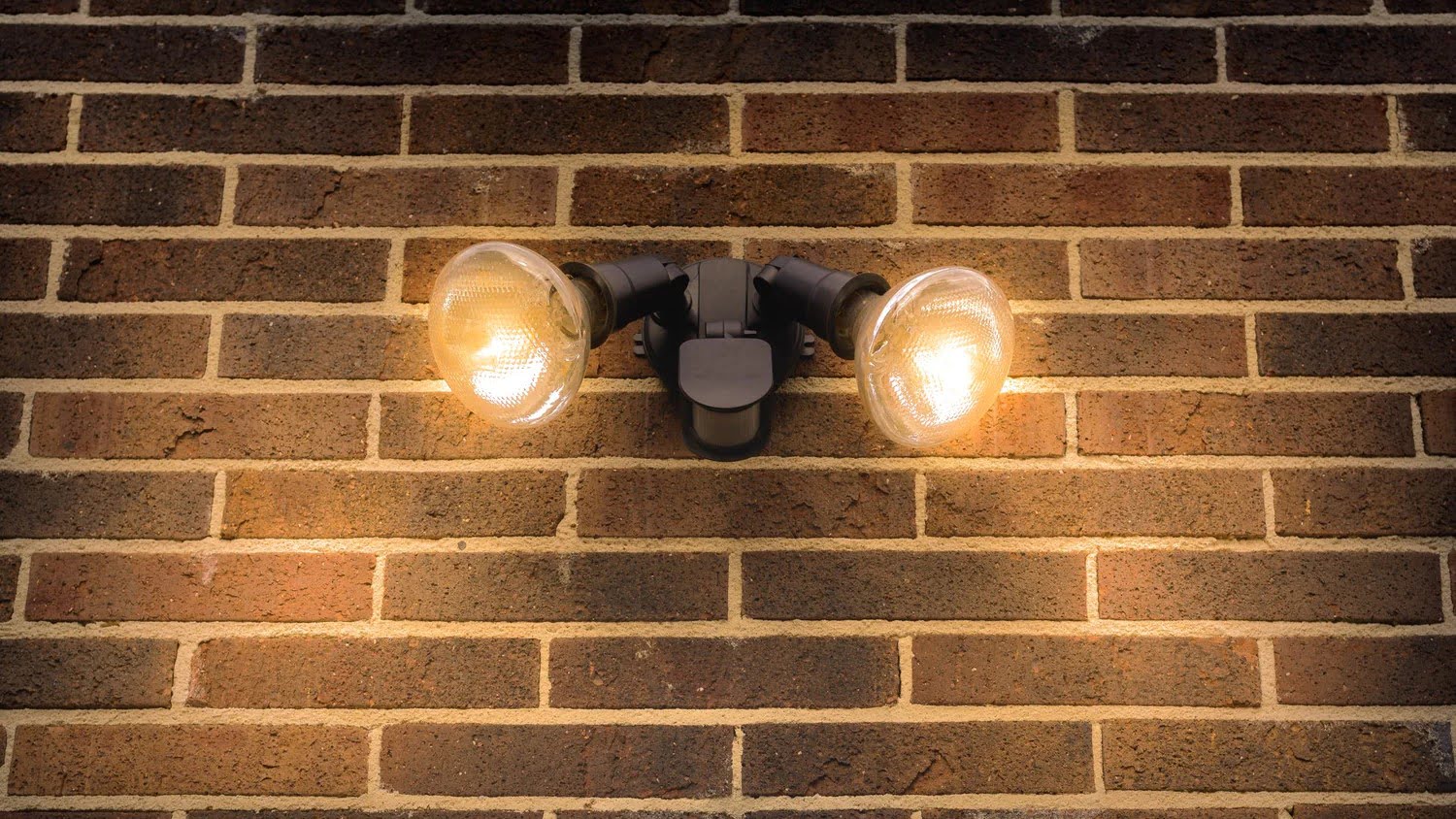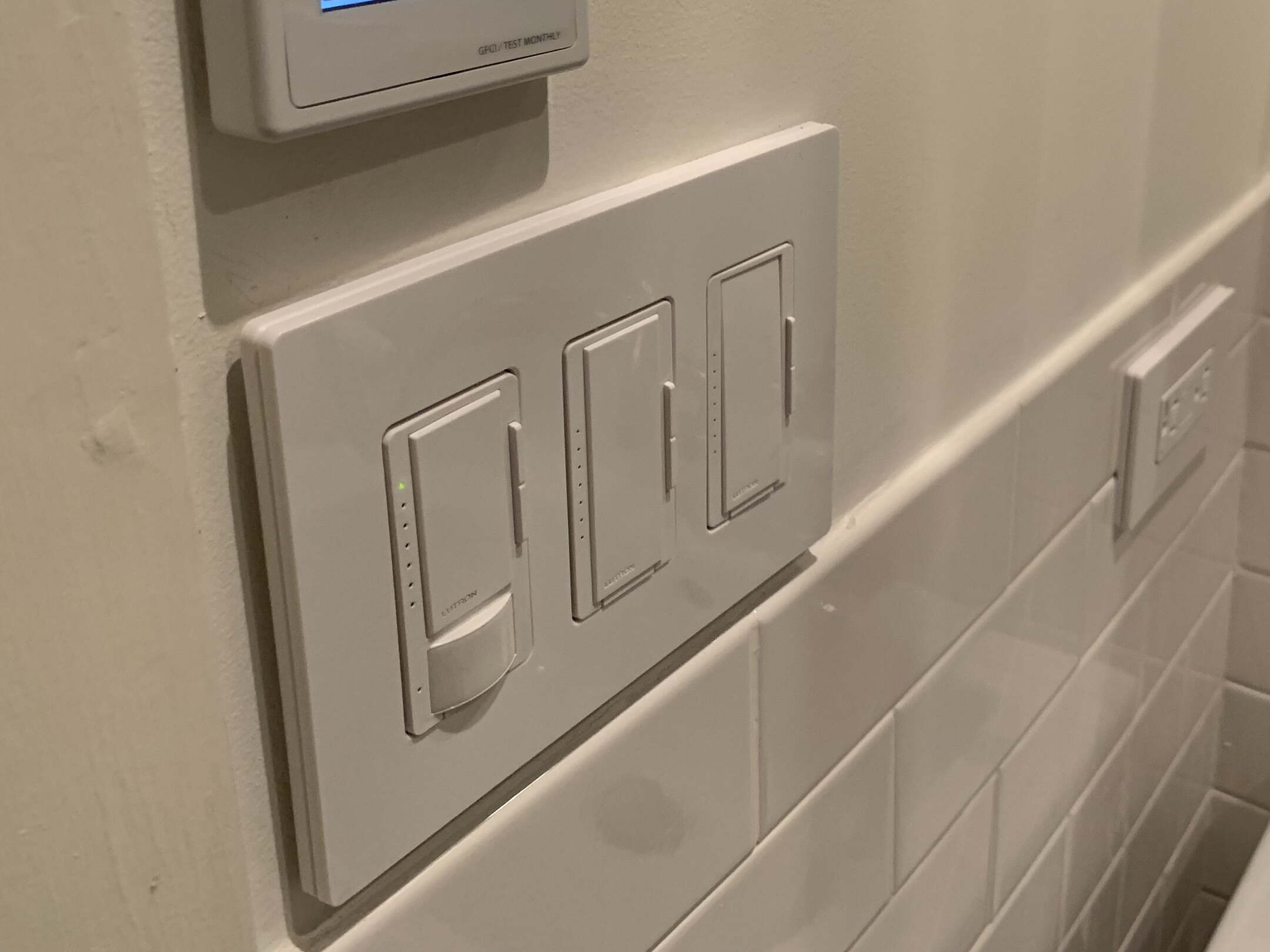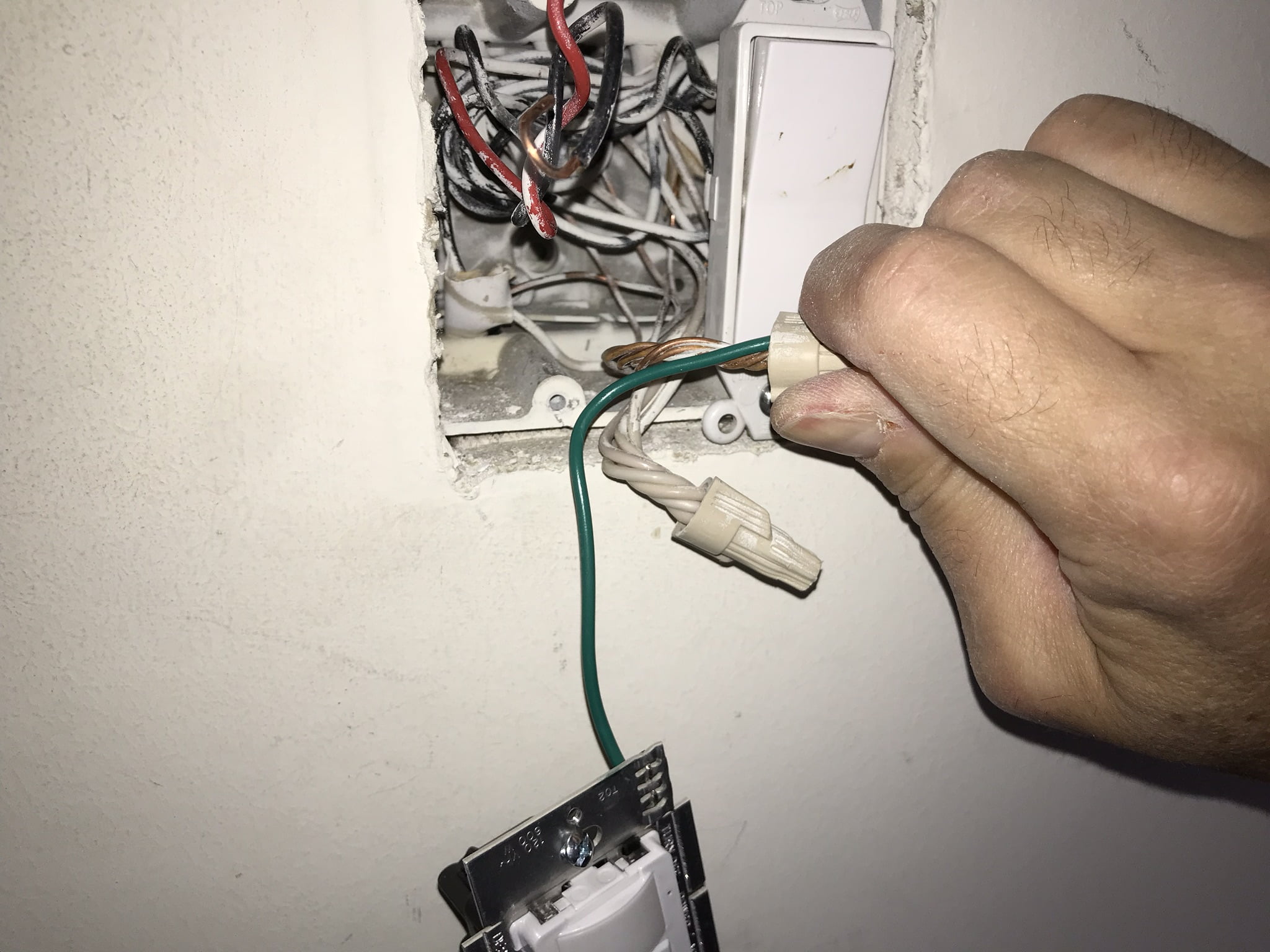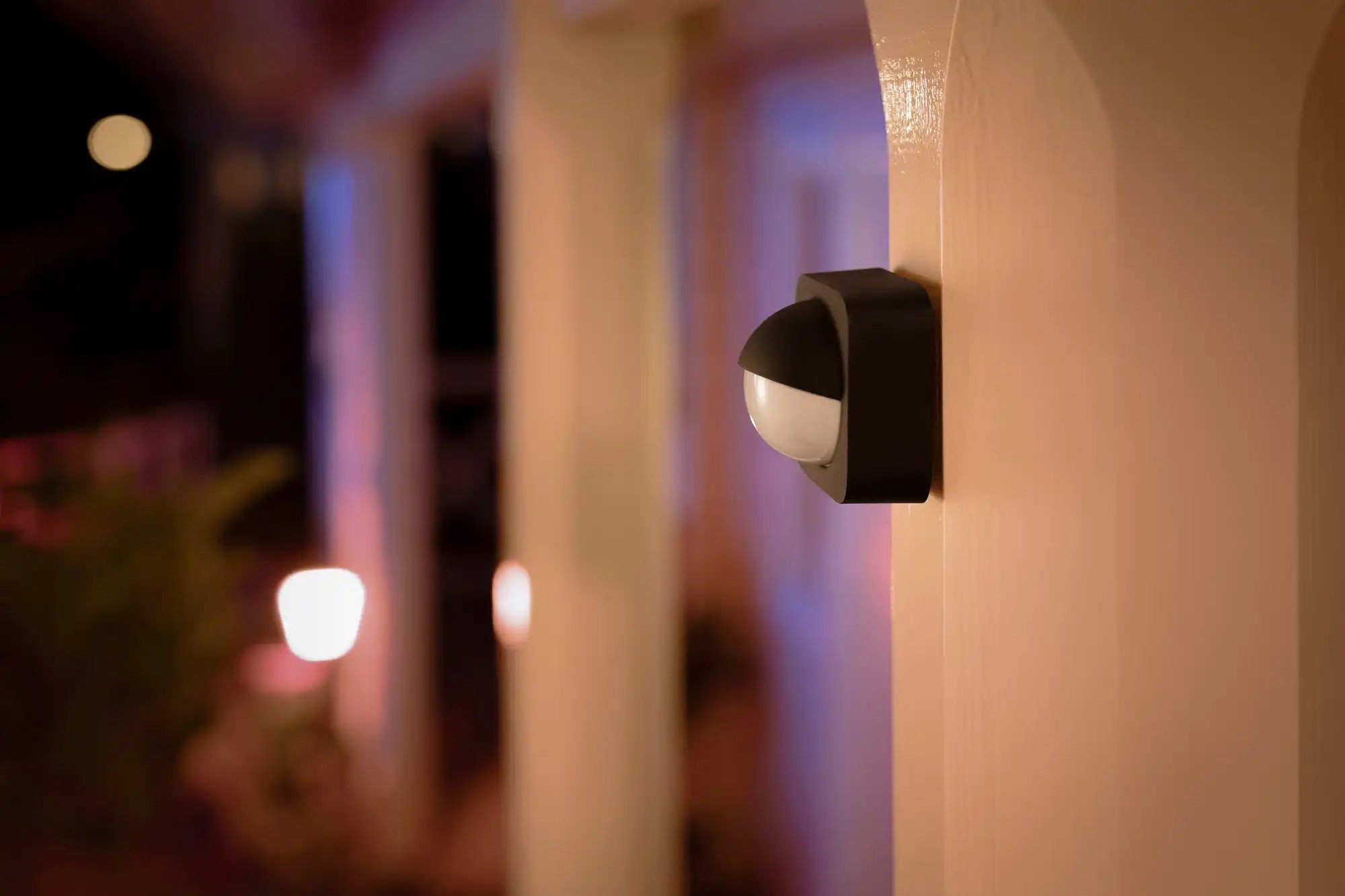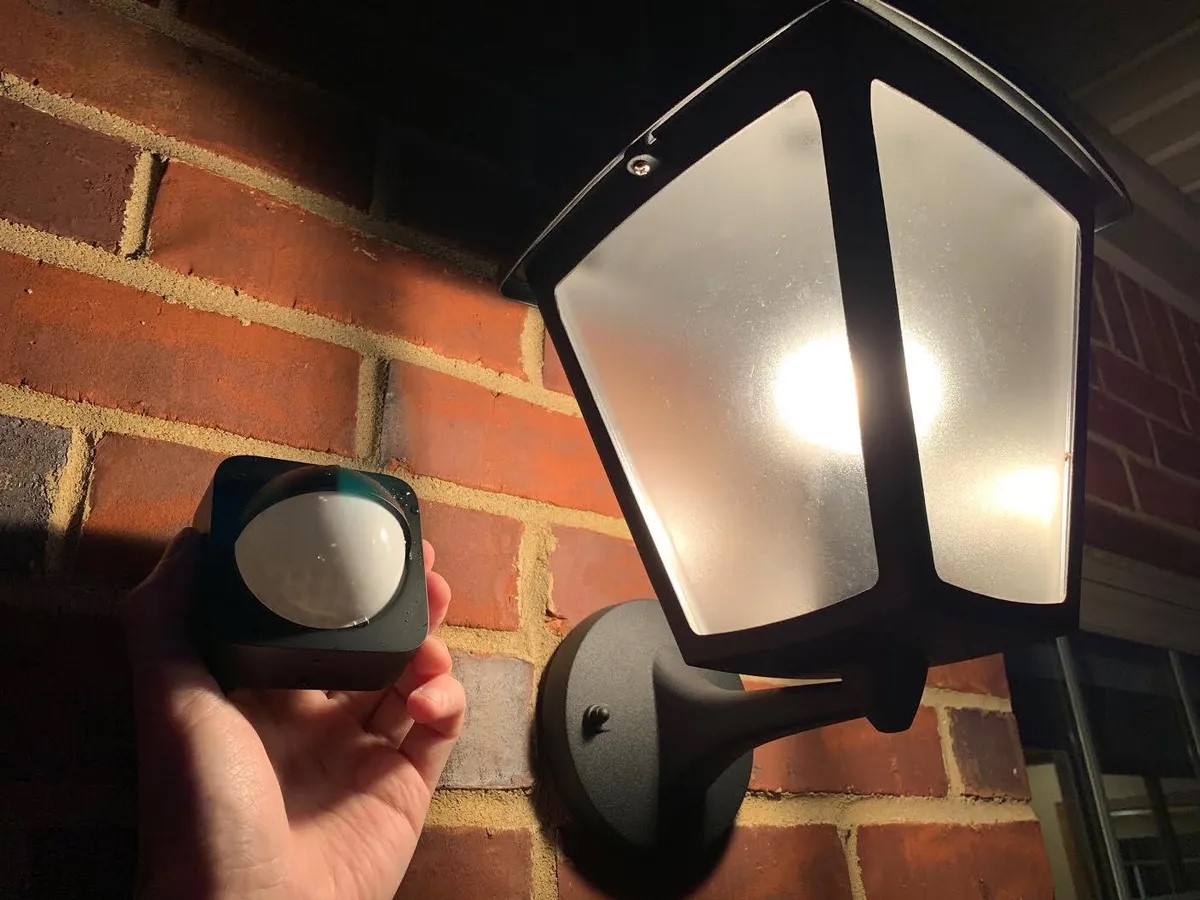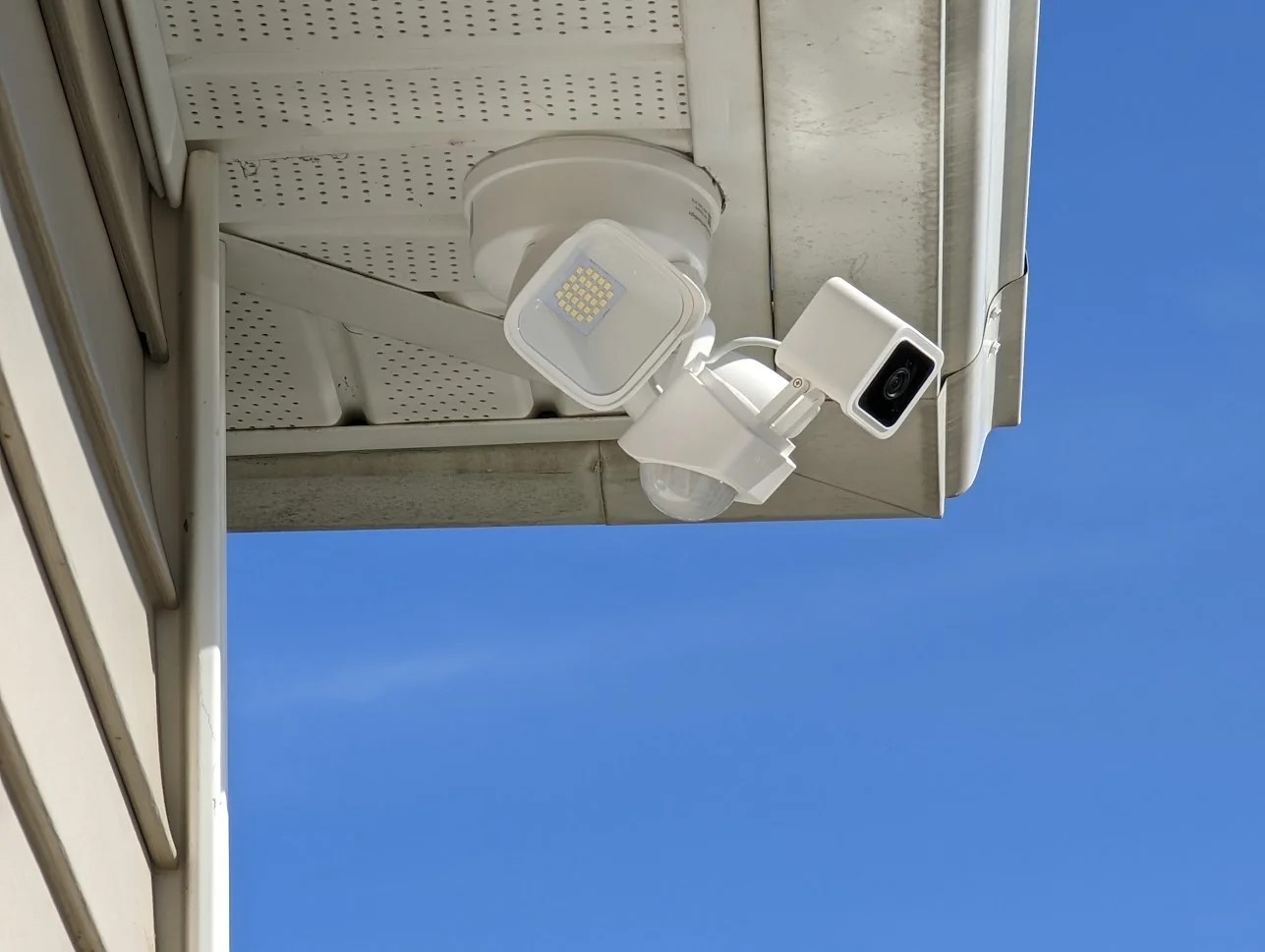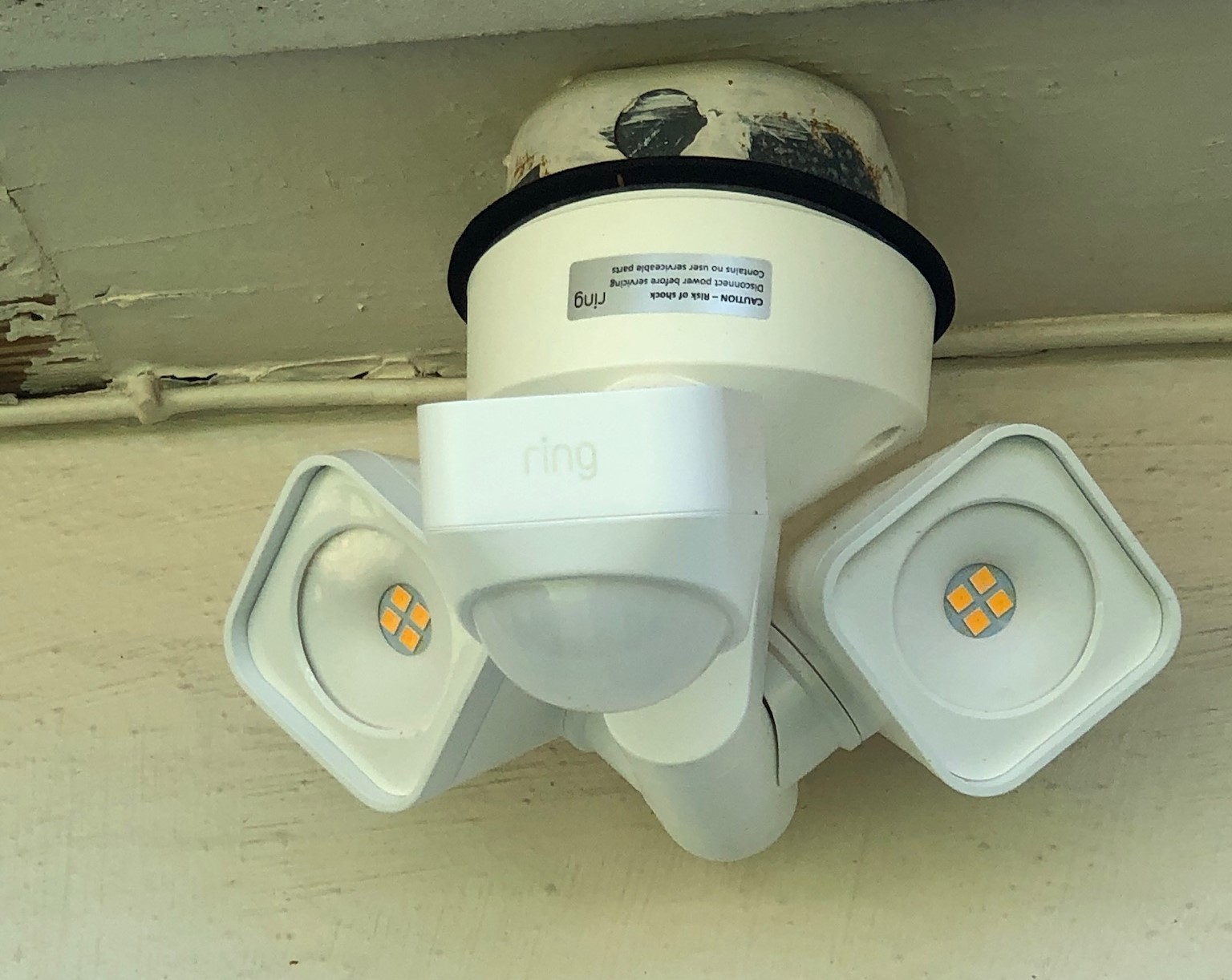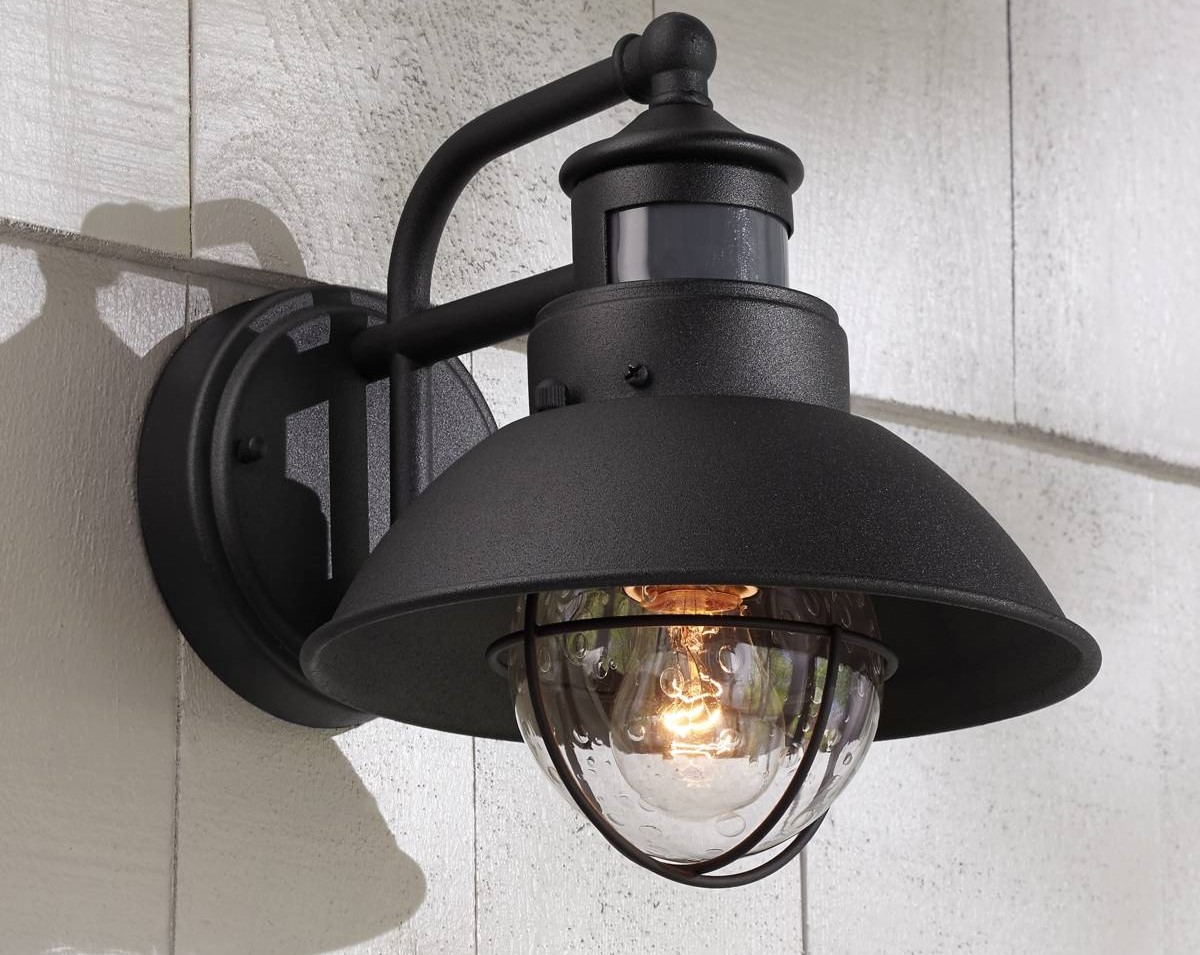Home>Home Security and Surveillance>How Do Motion Detector Light Switches Work
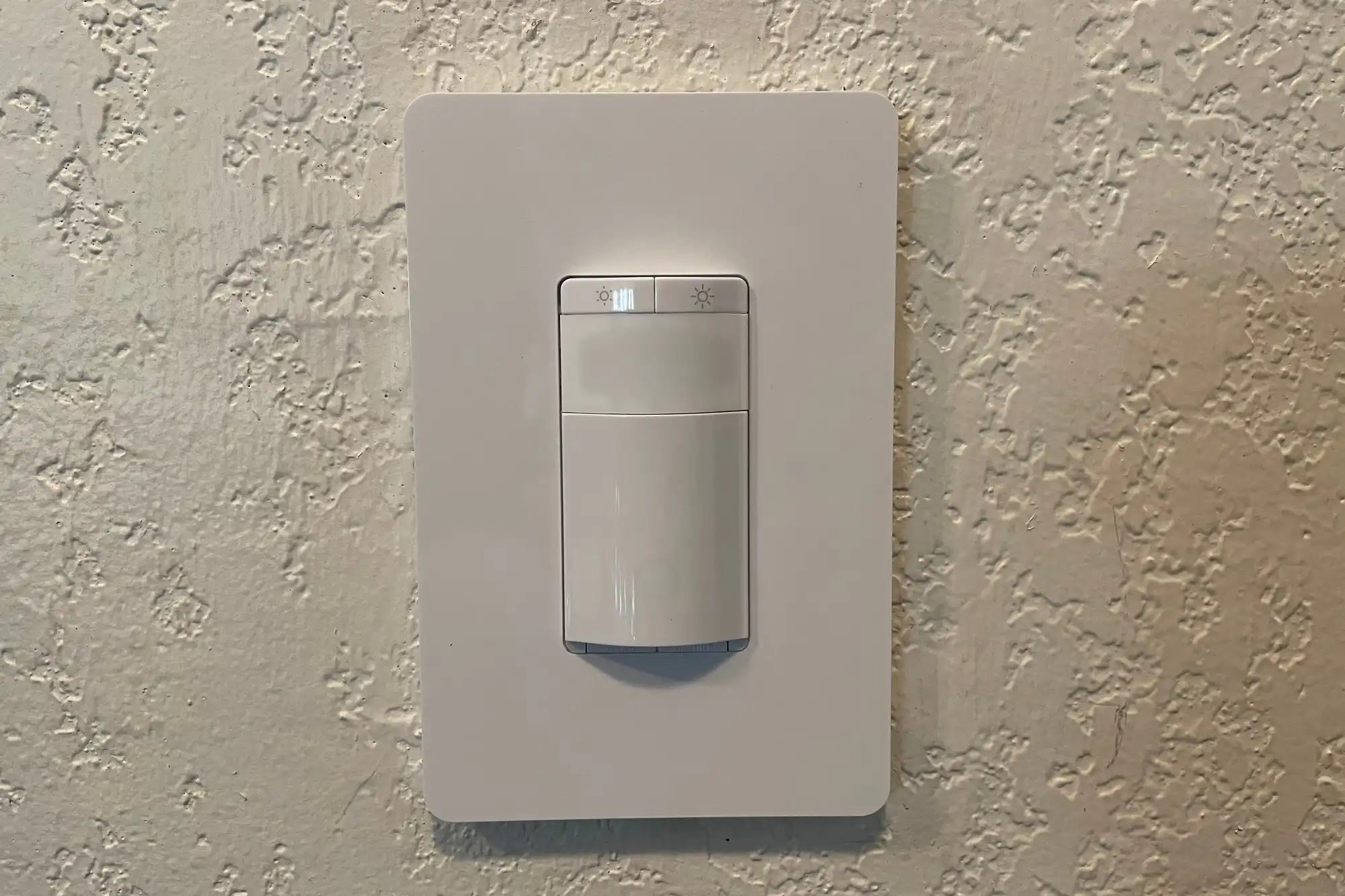

Home Security and Surveillance
How Do Motion Detector Light Switches Work
Modified: March 6, 2024
Learn how motion detector light switches work and enhance your home security and surveillance. Efficiently detect motion with these advanced devices for enhanced safety.
(Many of the links in this article redirect to a specific reviewed product. Your purchase of these products through affiliate links helps to generate commission for Storables.com, at no extra cost. Learn more)
Introduction
Welcome to the world of motion detector light switches, where convenience and security meet. These innovative devices have become incredibly popular in modern homes, allowing homeowners to automate their lighting systems and improve energy efficiency. But how exactly do motion detector light switches work? In this article, we will explore the basic functionality of these switches, the different types of motion detectors available, and how they can enhance your home security and surveillance system.
Motion detector light switches are designed to sense movement within a specific range and then trigger the attached lights to turn on automatically. They rely on advanced technology to detect changes in the environment and respond accordingly. With these switches installed, you no longer have to fumble for light switches in the dark or worry about accidentally leaving lights on when no one is in the room.
There are several types of motion detectors commonly used in residential applications. Each type utilizes different technologies to detect movement, allowing you to choose the one that best suits your needs. The most common types include Passive Infrared (PIR) sensors, ultrasonic sensors, dual technology sensors, and microwave sensors.
PIR sensors are the most widely used motion detectors and work by detecting infrared energy emitted by objects. When a person or an animal moves within the detection range of the sensor, the infrared energy changes, triggering the sensor to activate the lights. Ultrasonic sensors, on the other hand, emit high-frequency sound waves and detect any change in the echo pattern caused by movement. These sensors are particularly effective in detecting motion through obstacles, such as walls or doors.
Dual technology sensors combine the functionality of PIR and ultrasonic sensors to provide a higher level of reliability. These sensors require both heat and motion to trigger the lights, reducing the chances of false activations. Microwave sensors, on the other hand, emit continuous microwave signals and analyze the reflection patterns caused by movement. They are highly sensitive and can detect motion through walls and other solid objects.
In addition to detecting motion, some motion detector light switches also incorporate light sensors. These sensors measure the ambient light levels and prevent the lights from turning on during daylight or well-lit conditions. This feature not only saves energy but also helps to extend the lifespan of the light bulbs.
Sensitivity and settings play a crucial role in the effectiveness and reliability of motion detector light switches. Most switches allow you to adjust the sensitivity level, which determines the range and angle at which the sensor can detect motion. Proper placement and angling of the sensor are important to achieve optimal performance.
Key Takeaways:
- Motion detector light switches use advanced technology to automatically turn on lights when they sense movement, providing convenience, energy efficiency, and enhanced safety for homes and businesses.
- Understanding the different types of motion detectors and customizing sensitivity and settings ensures optimal performance and reliable motion detection, contributing to a greener and safer environment.
Basic Functionality
The basic functionality of motion detector light switches revolves around the detection of motion and subsequent activation of the connected lights. When you enter a room or an area monitored by the switch, the sensor detects your movement and sends a signal to the switch, which in turn triggers the lights to turn on.
These switches typically have a built-in timer that determines how long the lights will stay on after motion is detected. This feature ensures that the lights remain illuminated for a desired period of time, giving you enough visibility until you exit the area. The duration of the timer can usually be adjusted according to your preference.
Some motion detector light switches also offer additional features, such as adjustable sensitivity and a manual override mode. The sensitivity setting allows you to control how easily the sensor is triggered by movement, while the manual override mode allows you to keep the lights on constantly, bypassing the motion detection function. This can be useful when you want to use the lights for an extended period of time without having to constantly move within the sensor’s range.
One important aspect of motion detector light switches is the range and coverage they provide. The range refers to the distance at which the sensor can detect motion, while the coverage refers to the angle at which the sensor can detect movement. The range and coverage will vary depending on the specific model and type of motion detector used.
It’s worth noting that not all motion detector light switches are created equal. Higher-quality switches often incorporate advanced technology and design features that improve their performance and reduce false activations. These features may include advanced motion sensing algorithms, pet-immune capabilities to prevent pets from triggering the switch, and adjustable timers to fine-tune the duration of illumination.
Motion detector light switches can be installed in various locations throughout your home, including hallways, staircases, entryways, garages, and outdoor areas. By strategically placing these switches, you can ensure that the lights are always available when and where you need them, enhancing both convenience and safety.
In the next section, we will delve deeper into the different types of motion detectors used in these switches and how they operate.
Types of Motion Detectors
Motion detectors come in various types, each utilizing different technologies to detect movement. Understanding the different types will help you choose the most suitable motion detector light switch for your specific needs. The most common types of motion detectors include:
1. Passive Infrared (PIR) Sensors
Passive Infrared (PIR) sensors are the most widely used type of motion detectors. They work by detecting changes in infrared energy emitted by objects within their field of view. When a person, animal, or other heat-emitting object moves within the detection range of the sensor, the infrared energy levels change, triggering the sensor to activate the lights. PIR sensors are highly effective at detecting heat-based motion and are commonly used in indoor and outdoor applications.
2. Ultrasonic Sensors
Ultrasonic sensors emit high-frequency sound waves and detect any changes in the echo pattern caused by moving objects. When an object moves within the range of the ultrasonic waves, the sound waves bounce back differently, indicating the presence of motion. Ultrasonic sensors are particularly useful in detecting motion through obstacles, such as walls or doors, making them ideal for areas where line-of-sight detection is not possible.
Read more: How To Adjust Motion Detector Light Switch
3. Dual Technology Sensors
Dual technology sensors combine the functionality of PIR and ultrasonic sensors to provide a higher level of reliability and reduce false activations. These sensors require both heat and motion to trigger the lights, making them less prone to false alarms caused by environmental factors or small animals. Dual technology sensors are commonly used in areas where accurate and dependable motion detection is critical.
4. Microwave Sensors
Microwave sensors emit continuous microwave signals and analyze the reflection patterns caused by moving objects. These sensors are highly sensitive and can detect even minor movements within their range. Microwave sensors are effective at detecting motion through walls and other solid objects, making them suitable for areas where an unobstructed line of sight is not available. However, they can be more prone to false alarms compared to other types of motion detectors.
Each type of motion detector has its strengths and weaknesses, and their effectiveness will depend on the specific application and environmental factors. It is important to select the appropriate type of motion detector light switch based on your requirements and the conditions in which it will be installed.
Now that we have discussed the various types of motion detectors, let’s explore how each type works in more detail.
Passive Infrared (PIR) Sensors
Passive Infrared (PIR) sensors are the most commonly used type of motion detectors in residential and commercial settings. They work by detecting changes in infrared energy emitted by objects within their field of view. These sensors are highly effective at detecting heat-based motion and are an integral part of motion detector light switches.
PIR sensors consist of multiple components, including a pyroelectric sensor, a lens, and a processing unit. The pyroelectric sensor detects infrared energy emitted by objects as heat, and the lens helps to focus the energy onto the sensor. The processing unit analyzes the fluctuations in the detected energy and triggers the lights to turn on when motion is detected.
When a person, animal, or any other heat-emitting object moves within the detection range of the PIR sensor, the infrared energy levels change. This change is recognized by the sensor as a potential presence of motion. The sensor then sends a signal to the connected light switch, which activates the lights.
PIR sensors have a sensing range and a detection angle. The sensing range refers to the maximum distance at which the sensor can detect motion, while the detection angle determines the area within which the sensor can sense movement. The exact range and angle of detection may vary between different PIR sensors.
It’s important to note that PIR sensors are sensitive to changes in infrared energy, but they do not detect the actual presence of an object. Instead, they detect changes in the energy levels. This means that if an object remains stationary within the field of view of the sensor, it may remain undetected. However, as soon as the object moves and emits different levels of infrared energy, the sensor will register the change and activate the lights.
PIR sensors are highly effective in most scenarios, but they do have some limitations. They can be influenced by environmental factors such as changes in ambient temperature, drafts, and even sunlight. False activations can occur if there are sources of heat or moving objects within the sensor’s range that are not the intended target. However, these false activations can be minimized by adjusting the sensitivity settings and properly positioning the sensor.
Overall, Passive Infrared (PIR) sensors offer a reliable and cost-effective solution for motion detection in many home security and surveillance applications. Their simplicity, effectiveness, and widespread availability make them a popular choice for motion detector light switches.
In the next section, we will explore another type of motion detector, the Ultrasonic sensors, and how they differ from PIR sensors in their operation.
Ultrasonic Sensors
Ultrasonic sensors are another type of motion detector commonly used in motion detector light switches. These sensors utilize high-frequency sound waves to detect any changes in the echo pattern caused by moving objects. Ultrasonic sensors are particularly effective in detecting motion through obstacles, making them suitable for areas where line-of-sight detection is not possible.
The operation of ultrasonic sensors is based on the principle of echolocation, similar to how bats navigate in the dark. These sensors emit high-frequency sound waves, typically above the range of human hearing, which bounce off objects and return to the sensor. By analyzing the echo pattern and time taken for the waves to return, the sensor can determine the presence and movement of objects within its range.
When an object moves within the range of the ultrasonic waves, the sound waves bounce back differently, indicating the presence of motion. This change in the echo pattern triggers the sensor to activate the connected lights. Ultrasonic sensors are sensitive to even small movements and can detect motion accurately.
One of the key advantages of ultrasonic sensors is their ability to detect motion through obstacles such as walls, doors, or furniture. Unlike Passive Infrared (PIR) sensors, which rely on detecting changes in infrared energy, ultrasonic sensors can detect both heat-based and non-heat-based motion. This makes them suitable for areas where the sensor’s line of sight to the moving object may be obstructed.
Ultrasonic sensors have a wide coverage range, typically around 180 degrees or more, depending on the specific model. This wider coverage angle allows for better detection of motion within a larger area, making them ideal for spaces such as hallways or open areas.
However, there are some limitations to consider when using ultrasonic sensors. These sensors can be more sensitive to environmental factors such as air currents, temperature changes, or the presence of reflective surfaces. These factors can affect the accuracy and reliability of the sensor, potentially leading to false activations.
To minimize false activations, it is important to properly position and adjust the sensitivity settings of the ultrasonic sensor. Careful consideration of the installation location and the potential sources of interference can help optimize the performance of ultrasonic motion detectors.
Overall, ultrasonic sensors provide an effective solution for motion detection, particularly in areas where line-of-sight detection may be challenging. Their ability to detect motion through obstacles and their wide coverage range make them a valuable choice for motion detector light switches in various residential and commercial applications.
In the next section, we will discuss dual technology sensors, which combine the functionality of multiple motion detection technologies, and how they can provide enhanced reliability.
Read more: How To Install Motion Detector Light Switch
Dual Technology Sensors
Dual technology sensors are advanced motion detectors that combine the functionality of multiple motion detection technologies to provide enhanced reliability and reduce false activations. These sensors utilize a combination of two different technologies, typically Passive Infrared (PIR) and ultrasonic, to detect motion in a more accurate and dependable manner.
The idea behind dual technology sensors is to require both heat and motion to trigger the lights, reducing the chances of false alarms caused by environmental factors or small animals. By integrating two different detection methods, these sensors can provide a higher level of accuracy and reliability in motion detection.
In a dual technology sensor, both the PIR and ultrasonic sensors work together to analyze the environment. When either sensor detects heat-based motion or significant changes in the echo pattern, an activation signal is sent to the connected lights. This dual verification process helps to filter out false activations and ensures that the lights are only triggered when genuine motion is detected.
The combination of PIR and ultrasonic technology offers several benefits. The PIR sensor is highly effective in detecting heat-based motion, while the ultrasonic sensor is capable of detecting motion through obstacles and capturing non-heat-based movement. By combining these technologies, dual technology sensors provide a more comprehensive and accurate motion detection capability.
Installing motion detector light switches with dual technology sensors can significantly reduce false activations caused by environmental factors. For example, a sudden change in temperature or air currents may trigger a PIR sensor alone, leading to a false alarm. However, with a dual technology sensor, both the PIR and ultrasonic sensors must detect motion before triggering the lights, reducing the chances of false activations.
It’s important to note that dual technology sensors may come with adjustable settings, such as sensitivity and timer duration, allowing you to fine-tune the detection parameters according to your specific needs. By customizing these settings, you can optimize the performance of the dual technology sensor based on the environment and the desired level of reliability.
Dual technology sensors are commonly used in areas where accurate and dependable motion detection is crucial, such as security-sensitive areas or commercial settings. These sensors provide an added layer of confidence in motion detection, while minimizing false alarms and improving overall system performance.
In the next section, we will explore another type of motion detector, the microwave sensors, and how they differ in operation from PIR and ultrasonic sensors.
Microwave Sensors
Microwave sensors are a type of motion detector that utilize continuous microwave signals to detect movement. These sensors emit microwaves and analyze the reflection patterns caused by moving objects, allowing them to detect motion through walls and other solid objects. Microwave sensors are highly sensitive and can detect even minor movements within their range.
The operation of microwave sensors is based on the principle of Doppler radar. These sensors emit microwave signals, typically in the range of a few gigahertz, and analyze the reflected signals that bounce back after hitting objects in their path. When an object moves within the range of the microwave waves, it causes a change in the frequency of the reflected waves, known as the Doppler effect.
By analyzing the Doppler effect, microwave sensors can detect and determine the direction and speed of objects in motion. When motion is detected, the sensor sends a signal to the connected lights, activating them accordingly.
One of the key advantages of microwave sensors is their ability to detect motion through obstacles and walls. Unlike Passive Infrared (PIR) and ultrasonic sensors, which rely on line-of-sight detection, microwave sensors can penetrate most solid materials, allowing them to monitor a larger area and detect motion through barriers.
Microwave sensors have a wide coverage range and can detect motion over large distances, making them suitable for applications where a broad area needs to be monitored. However, it’s important to note that the range and sensitivity of microwave sensors can be adjusted to suit specific requirements, ensuring that they are neither too sensitive nor too restrictive.
While microwave sensors offer excellent motion detection capabilities, they may be more prone to false activations compared to other types of motion detectors. Factors like air currents, moving objects, or even rain can potentially trigger false alarms. To minimize false activations, microwave sensors often include adjustable settings that allow you to fine-tune the detection parameters and sensitivity level according to the environment in which they are installed.
Microwave sensors are commonly used in areas where an unobstructed line of sight is not available or where a higher level of motion detection sensitivity is required. They are commonly found in outdoor security systems, large open spaces, and commercial settings where reliable and accurate motion detection is crucial.
Now that we have covered the basic functionality and various types of motion detectors, we will now move on to discussing the role of light detection in motion detector light switches.
Light Detection
Light detection is an important feature incorporated into some motion detector light switches. These switches are equipped with light sensors that measure the ambient light levels in the surrounding area. The purpose of light detection is to prevent the lights from turning on during daylight or well-lit conditions, saving energy and extending the lifespan of the light bulbs.
Light sensors, commonly known as photoelectric sensors, detect the intensity of light in their environment. They work by measuring the amount of light that hits their surface. When the ambient light levels fall below a certain threshold, indicating low lighting conditions, the light sensor allows the motion detector light switch to activate the lights when motion is detected.
By incorporating light detection capability, motion detector light switches can intelligently determine whether it is necessary to turn on the lights based on the existing illumination levels. This prevents unnecessary usage of the lights during the day or in well-lit areas, resulting in energy savings and reduced utility costs.
Light detection not only helps conserve energy but also increases the lifespan of the light bulbs. By ensuring that the lights are only activated when there is a need for additional illumination, the overall usage hours of the bulbs are reduced. This can significantly extend their lifespan, reducing the frequency of bulb replacements and the associated costs.
Light sensors in motion detector light switches are typically adjustable, allowing you to set the threshold at which the lights should be activated. This customization ensures that the switch will respond appropriately to the specific lighting conditions of the installed location.
It’s important to note that light detection is particularly useful in outdoor applications, where daylight and artificial lighting sources are present. For example, in a porch or outdoor security lighting system, the light sensor can keep the lights off during the day and automatically activate them at dusk or when there is a significant decrease in ambient lighting.
Overall, light detection is a valuable feature in motion detector light switches as it enhances energy efficiency and prolongs the lifespan of the light bulbs. By accurately assessing the lighting conditions using light sensors, these switches can ensure that the lights are only activated when needed, providing both convenience and cost savings.
In the next section, we will discuss the sensitivity and settings of motion detector light switches, allowing you to customize their performance based on your preferences.
Sensitivity and Settings
Sensitivity and settings play a crucial role in the performance and effectiveness of motion detector light switches. These settings allow you to customize the behavior of the switch and fine-tune its sensitivity to motion, resulting in optimal performance and reliable motion detection.
One of the key settings found in motion detector light switches is sensitivity adjustment. This setting determines the level of motion detection sensitivity and can be adjusted to match the specific requirements of the installation location. Higher sensitivity settings make the switch more responsive to even minor movements, while lower sensitivity settings may require more significant motion to trigger the lights.
The sensitivity setting is crucial because it ensures that the switch responds appropriately to the size and distance of the objects it detects. For example, in a room with small pets, setting the sensitivity too high may result in frequent false activations. On the other hand, setting the sensitivity too low in a large space may cause the switch to ignore human movement.
It’s important to note that sensitivity settings may differ based on the type of motion detection technology used in the switch. For example, Passive Infrared (PIR) sensors may have a separate setting for heat sensitivity, while ultrasonic or microwave sensors may have a setting for detection range or coverage angle.
In addition to sensitivity, motion detector light switches often provide various other adjustable settings, such as timer duration and light level threshold (for light detection models). The timer duration setting allows you to determine how long the lights will stay on after motion is detected, giving you control over the duration of illumination.
The light level threshold setting is specifically applicable to motion detector light switches with light detection capability. This setting allows you to adjust the threshold at which the lights should be activated based on the ambient light levels. By customizing this setting, you can ensure that the lights are only triggered when the lighting conditions necessitate additional illumination.
These settings can usually be adjusted using built-in controls or through programming interfaces, depending on the specific model of the motion detector light switch. It is important to follow the manufacturer’s instructions and guidelines for adjusting these settings to ensure proper functionality and achieve the desired performance.
To optimize the performance of a motion detector light switch, it is essential to experiment with different sensitivity and settings configurations based on the unique requirements of your installation. By finding the right balance, you can eliminate false activations, maximize energy efficiency, and enhance the overall functionality of the switch.
In the next section, we will discuss the installation and wiring process for motion detector light switches, providing guidance on how to set them up in your home or business.
Installation and Wiring
Installing a motion detector light switch involves a few simple steps and basic wiring knowledge. While the specific installation process may vary depending on the model and manufacturer, the following general guidelines will help you understand the basic procedure.
Before beginning the installation, ensure that you have the necessary tools and equipment. This may include a voltage tester, wire strippers, electrical tape, a screwdriver, and wire connectors. It is also essential to turn off the power to the circuit where the switch will be installed.
1. Begin by removing the existing switch: Start by turning off the power to the circuit at the breaker box. Use a screwdriver to remove the screws holding the switch plate, and then unscrew the switch from the electrical box. Carefully pull the switch out, ensuring that the wires are still attached.
2. Verify the wiring: Use a voltage tester to confirm that the power is off before proceeding. Check the wiring inside the electrical box to identify which wires are hot (typically black or red), neutral (typically white), and ground (usually bare copper or green).
3. Connect the wires: Follow the manufacturer’s instructions to properly connect the wires from the motion detector light switch. Most switches will require connecting the hot wire to the black screw or terminal, the neutral wire to the silver screw or terminal, and the ground wire to the green screw or terminal.
4. Mount and secure the switch: Carefully insert the connected wires back into the electrical box. Mount the motion detector light switch onto the electrical box, using the provided screws. Ensure that the switch is securely attached and level with the wall surface.
5. Test the installation: Once the switch is installed, turn the power back on at the breaker box. Test the functionality of the switch by moving within its range and observing if the connected lights turn on and off as expected. Make any necessary adjustments to the sensitivity or settings as needed.
It is important to note that specific wiring and installation instructions may vary based on the model and type of motion detector light switch you are using. Always refer to the manufacturer’s documentation and follow their guidelines for proper installation and wiring.
If you are unsure or uncomfortable with performing the installation yourself, it is recommended to hire a licensed electrician who can ensure a safe and professional installation.
Now that you have successfully installed the motion detector light switch, you can enjoy the convenience and energy efficiency it provides. In the next section, we will discuss common issues and troubleshooting tips to help you address any potential problems.
Common Issues and Troubleshooting
While motion detector light switches are designed to provide reliable and convenient operation, there may be instances where you encounter certain issues. Here are some common issues that can occur and troubleshooting tips to help you resolve them:
1. Lights Not Turning On:
- Check that the power to the switch is turned on. Verify that the circuit breaker is not tripped.
- Confirm that the wiring is correctly connected to the switch and there are no loose connections.
- Adjust the sensitivity settings of the switch to ensure it can detect motion properly.
2. Lights Randomly Turning On/Off:
- Check for any sources of interference, such as heat sources, fans, or moving objects, that could be triggering the motion detection.
- Make sure the switch is properly positioned and angled to avoid false motion detections.
- Consider adjusting the sensitivity settings to reduce the risk of false activations.
Read more: How Do Motion Detector Lights Operate
3. Lights Not Turning Off:
- Check for any obstructions or continual motion within the sensor’s range that may prevent the lights from turning off.
- Ensure that the timer duration setting is appropriately configured to determine how long the lights should stay on.
- If the switch has a manual override mode, check if it is engaged, as this may keep the lights on constantly.
4. Inconsistent Motion Detection:
- Clean the sensor lens periodically to remove any dust, dirt, or debris that could affect its performance.
- Make sure the sensor is not obstructed by any objects or furniture that could interfere with its detection capabilities.
- Ensure the sensor is positioned to cover the desired area effectively, considering the range and angle of detection.
- Adjust the sensitivity settings to fine-tune the motion detection based on the specific requirements of the location.
5. False Alarms:
- Identify the source of the false activations, such as moving branches, animals, or reflections that may trigger the sensor.
- Consider adjusting the sensitivity settings to reduce the likelihood of false alarms without compromising detection reliability.
- Utilize masking tape or other materials to block out certain areas of the sensor’s range that may be prone to false activations.
If you have gone through these troubleshooting steps and are still experiencing issues with your motion detector light switch, refer to the manufacturer’s documentation for further guidance. It may be necessary to contact their customer support for additional assistance.
Remember that regular maintenance, such as cleaning the sensor lenses and ensuring proper positioning, can help prevent and resolve many common issues with motion detector light switches.
In the next section, we will conclude our article by highlighting the benefits and importance of motion detector light switches in enhancing home security and surveillance systems.
Motion detector light switches work by using sensors to detect movement in a room. When motion is detected, the switch turns on the lights. This is a great way to save energy and provide convenience in areas where lights are not always needed.
Conclusion
Motion detector light switches have revolutionized home security and surveillance systems by providing convenience, energy efficiency, and enhanced safety. These innovative devices use advanced technology to detect motion within a specified range and automatically trigger lights to turn on. By understanding the basic functionality and different types of motion detectors, you can choose the most suitable option for your needs.
Passive Infrared (PIR) sensors, ultrasonic sensors, dual technology sensors, and microwave sensors each offer unique advantages in motion detection, allowing you to select the type that best fits your requirements. Additionally, the integration of light detection in certain motion detector light switches further enhances their efficiency and energy-saving capabilities.
Proper customization of sensitivity and settings ensures optimal performance and reliable motion detection. By adjusting the sensitivity, timer duration, and light level threshold, you can fine-tune the switch to perform at its best in your specific environment.
Installation and wiring of motion detector light switches can be straightforward, but it’s crucial to follow the manufacturer’s instructions and have a basic understanding of electrical systems. However, if you are uncertain, it is best to consult a licensed electrician to ensure a safe and professional installation.
As with any technology, there may be common issues that can arise, such as lights not turning on or off correctly, random activations, or inconsistent motion detection. However, by troubleshooting these issues and maintaining the sensors properly, you can overcome these challenges and enjoy the benefits of motion detector light switches effectively.
In conclusion, motion detector light switches provide a practical and efficient way to automate lighting systems, improve energy efficiency, and enhance home security and surveillance. They offer peace of mind by ensuring that lights are activated only when needed, saving energy, and deterring potential intruders. By combining convenience and functionality, motion detector light switches have become an integral part of modern homes and businesses.
So, embrace the power of motion detector light switches and take control of your lighting system. Not only will you enjoy the ease and convenience, but you will also contribute to a greener and safer environment.
Frequently Asked Questions about How Do Motion Detector Light Switches Work
Was this page helpful?
At Storables.com, we guarantee accurate and reliable information. Our content, validated by Expert Board Contributors, is crafted following stringent Editorial Policies. We're committed to providing you with well-researched, expert-backed insights for all your informational needs.
